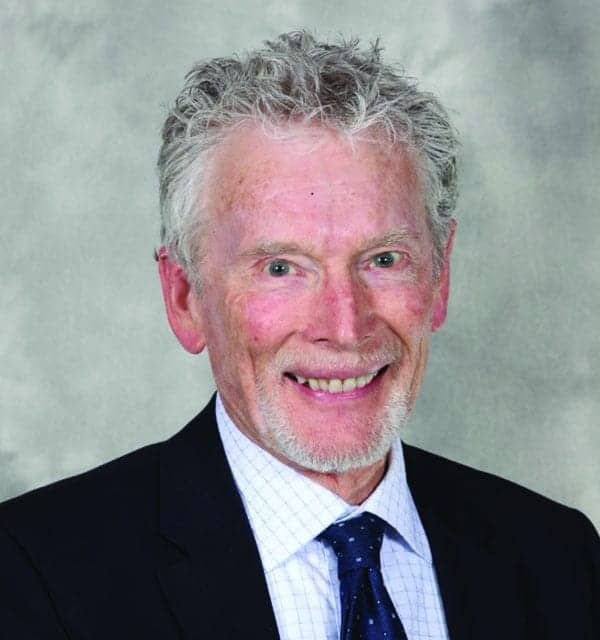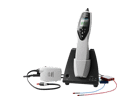Final Word | April 2015 Hearing Review
As a part of my job, I’ve had the opportunity to visit busy offices and observe clinicians at work in different parts of the country over the past couple of months. I’ve witnessed initial consultations and follow-up appointments that involve hearing aid fittings.
The wide range of patients never ceases to amaze me. Some are motivated, accepting of their situation, and move through the process easily. Others may not communicate well, reflect negative emotions about the hearing loss or the hearing aid, and generally fight the process. I’ve observed that we tend to celebrate with the positive ones, and struggle with those who are more negative.
When we plan to complete a task, there are fundamental elements that must be taken into consideration. Building a structure, learning a task, helping someone else with our skills and knowledge all require fundamental skills that the successful completion of the task is dependent upon. Poor foundations yield faulty buildings; trying to learn a new language without grammatical structure and vocabulary is fruitless, and trying to help others without preparation is doomed to failure.
Our work with people who have hearing loss requires basic skills and knowledge. New methods, products, and shortcuts may entice us to jump to actions that may bypass necessary foundational steps for optimal outcomes. Do we have the basic skills and knowledge to be prepared for the people who don’t fit into the positive profile? Are they part of the majority of people who have trouble hearing yet don’t obtain hearing aids? These questions frame the topic of this column: Are we doing all we can to provide help to people who act like they don’t want our help?
Most of us have had a psychology course or two, but that by no means does a good job of giving us the skills and experience to bring some of these people around to accepting what they need to do. Where do we learn it then?
Mostly by observing our peers and colleagues who have success, as well as those who appear not to be as successful—and learning from those vicarious experiences as well as learning from our patients. As we learn and practice, there is growth in our skills that allows us to be more effective. Let’s look at some of the fundamental steps we can take:
Introductions. How is the initial contact with the patient managed? In the interest of efficiency, some offices are adopting practices that reduce the time that the clinician has to spend with nonclinical activities. I applaud this because our time is limited as it is and, if we have staff who take care of tasks that are not related to the direct care of the patient, we have more time to care for more people.
If part of that efficiency involves having other staff greet and bring the patient back to a treatment room, we want to be sure that the staff is well trained and is part of a positive experience. When we greet the patient, do we take the time to make or reestablish our bond with them? This may take only a minute or so, but it gives the patient a moment to recognize that we are focusing on the most important person in the room, them!
The history. Are we running through a quick checklist, or are we probing to learn the important things to address for this unique individual? Are we asking the questions, and most importantly, are we listening? The flexibility of today’s hearing aids is so great that it is very tempting to fire up the computer to see what can be tweaked and “fix” their complaints.
Speaking of history, in the early 1980s a number of us were talking with engineers who were promoting techniques to allow programming of hearing aids instead of using trim potentiometers that minimally adjusted frequency response and output parameters. We thought that, if they could only come up with a method for making more changes in the electroacoustic parameters, our problems would be solved. They did come up with a way within the decade that followed, and we were wrong about the problems going away!
Carefully listening to the patient’s comments is what I rely on. When their comments aren’t clear, I ask them to describe it in a different way, and ask more questions to make sure I understand. When I do that, and rephrase what I have learned from them and ask if I have a good understanding of their problem, another potential barrier is surmounted.
The evaluation and the recommendation. Whether an encounter is an initial consultation or a follow-up visit, what additional information might we need to determine the best approach for the patient? What is important for a medical exam may not tell us what is needed for a rehabilitative approach.
Is the current standard of care appropriate? If we conduct an evaluation and find that the patient has relatively normal thresholds and good single-word recognition ability, do we send them away, or start asking more questions? Why are they in front of us, and is there something we can offer that will solve a problem for them? If they have a hearing loss, do we offer an array of options that are simple but broad enough to encourage more discussion? If not, we may be creating the negative response we are trying to avoid.
Offering a several thousand dollar solution to every patient has gotten us to help about one-fifth of the people who need help. Maybe we can come up with a way to help more people, and still be in business to help those who need the more expensive solutions.
The Final Word? Very few people want a hearing aid. People who have trouble hearing do want better hearing, however. It might take time to drill down to this concept and recognize this fact.
Denial is one of the many barriers we face, and challenging it can make people grumpy. I had the opportunity to work with an accomplished audiologist when I was in graduate school. He pronounced that we couldn’t help people who weren’t ready, or weren’t willing, to help themselves. I understood that, but I felt lousy about sending them away without help.
I have found that establishing a good bond with patients, listening carefully to their comments, and offering a range of solutions is a good start; I may have given them something to help them along their journey, even if they didn’t make a decision to act that day. Somehow I don’t feel lousy about that.
Dennis Van Vliet, AuD, has been a prominent clinician, columnist, educator, and leader in the hearing healthcare field for nearly 40 years, and currently serves as the senior director of professional relations for Starkey Technologies, Eden Prairie, Minn.
Correspondence can be addressed to HR or: [email protected]
Original citation for this article: Van Vliet, D. Helping People Who May Not Want All Our Help. Hearing Review. 2015;21(1):50.





